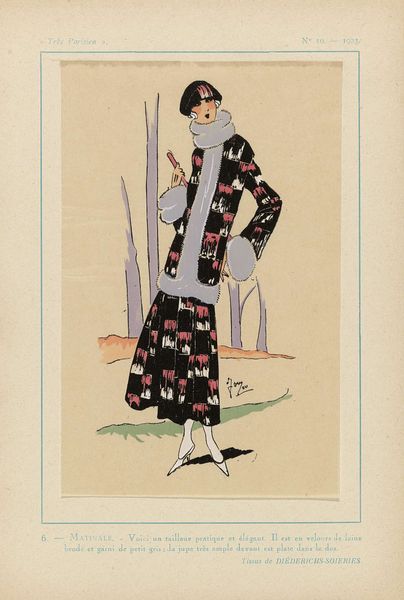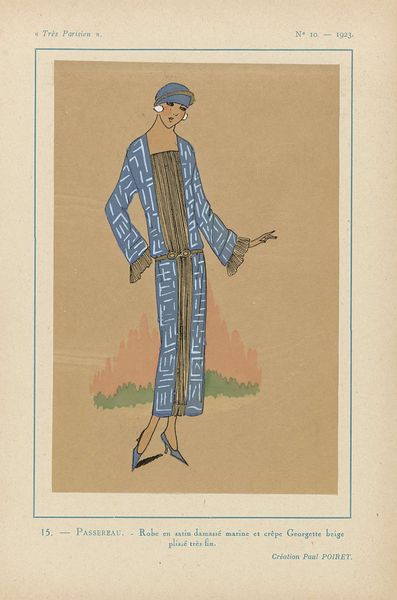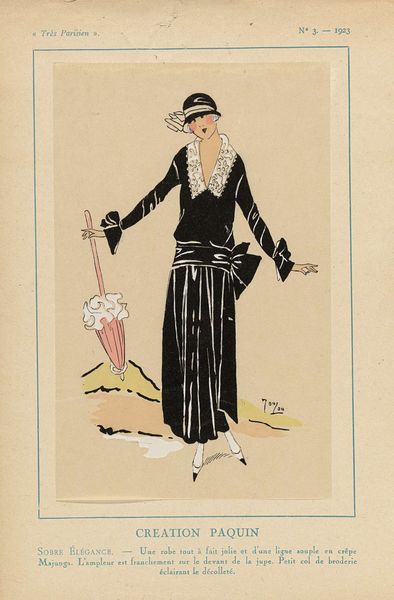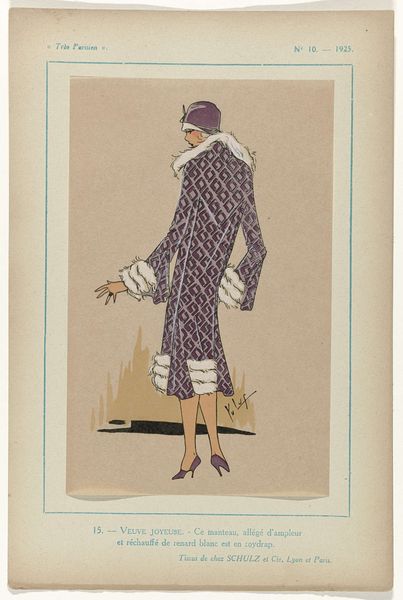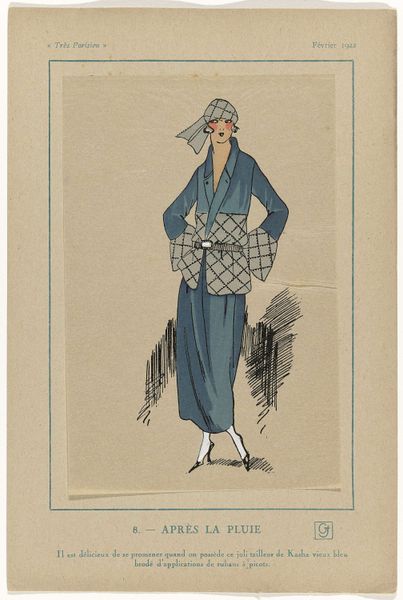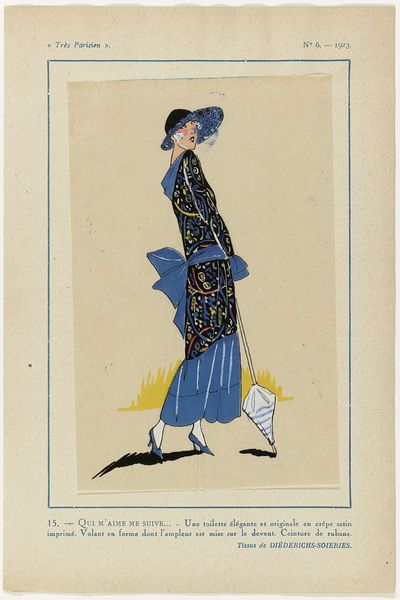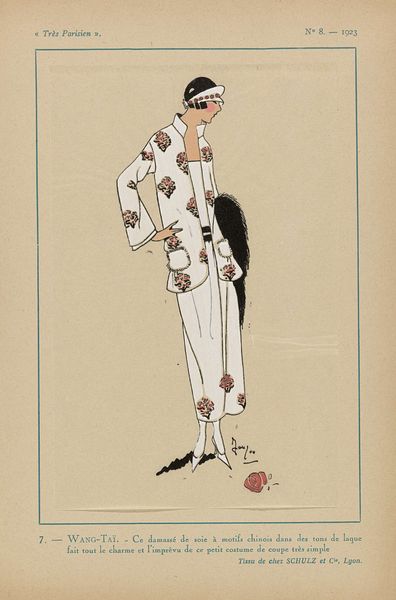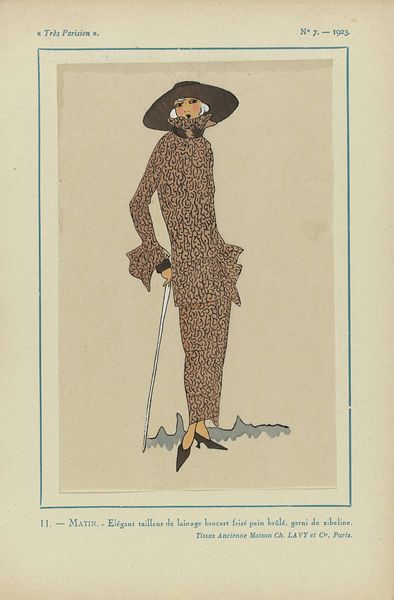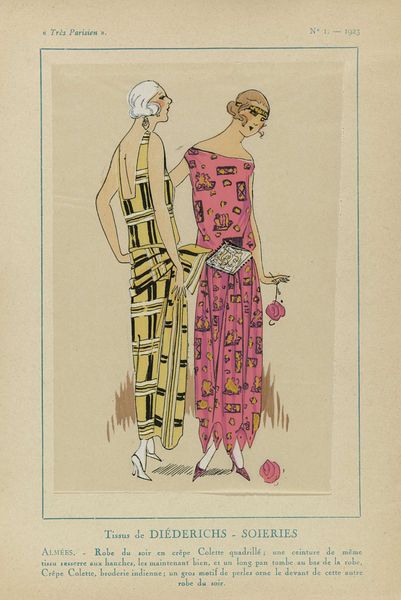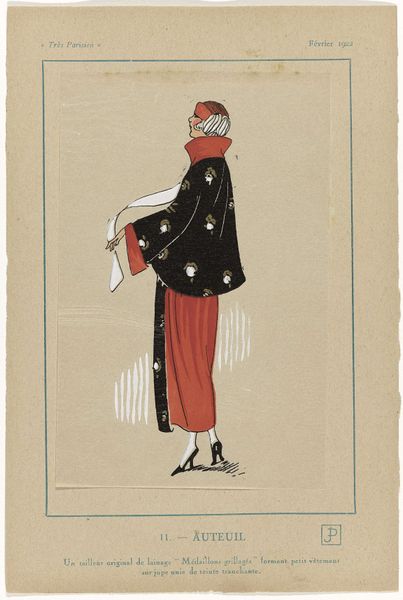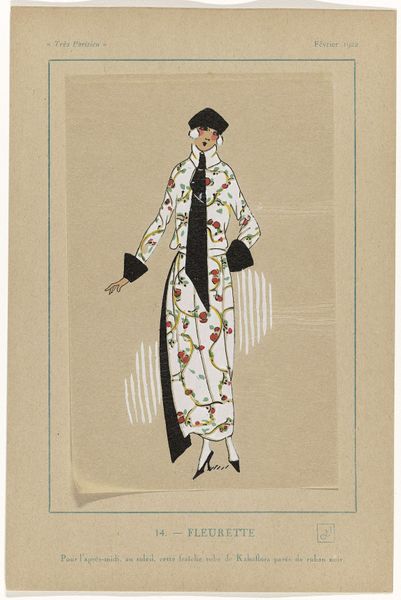
drawing, watercolor
#
portrait
#
art-deco
#
drawing
#
pastel soft colours
#
figuration
#
watercolor
#
flat colour
#
historical fashion
#
watercolour illustration
#
decorative-art
Dimensions: height 269 mm, width 180 mm
Copyright: Rijks Museum: Open Domain
This is a fashion plate titled “Très Parisien, 1923, No 1: Tissus de RODIER...” made in 1923 by an anonymous artist. This artwork gives us a glimpse into the aspirations and anxieties of the post-World War I era. The image depicts a slender woman modeling an ensemble made of black velvet and Rodier fabric, embodying the "garçonne" look, which challenged traditional notions of femininity. The androgynous style, with its flattened bust and shortened skirt, was a visual representation of women's changing roles in society, reflecting their newfound independence and participation in public life. Yet, it also perpetuated a certain ideal of feminine beauty, one that privileged youth, slenderness, and a specific type of modernity. The choice of luxurious materials like velvet speaks to the economic disparities of the time, highlighting the privilege associated with high fashion. While some women embraced the flapper aesthetic, it was not accessible to all, thus creating visible markers of class. The emotional dimensions of fashion, its power to both liberate and confine, make this image all the more compelling.
Comments
No comments
Be the first to comment and join the conversation on the ultimate creative platform.
